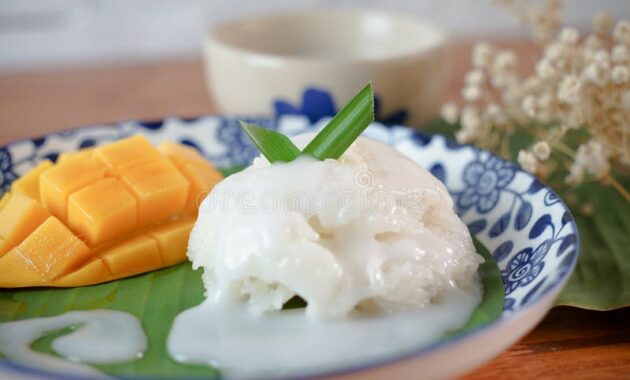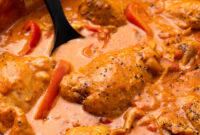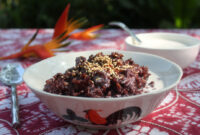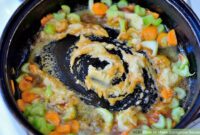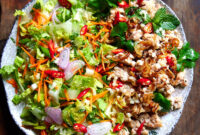Sticky rice, also known as glutinous rice, is a culinary cornerstone across many Asian cultures. Its unique texture, both chewy and slightly sweet, makes it incredibly versatile – perfect as a base for savory dishes, a delightful component of desserts, or simply enjoyed on its own. If you’ve ever wondered how to make perfectly cooked, authentic sticky rice at home, this comprehensive guide will walk you through every step, ensuring a delicious and satisfying result. Whether you’re a seasoned cook or a kitchen newbie, this sticky rice recipe is designed for success.
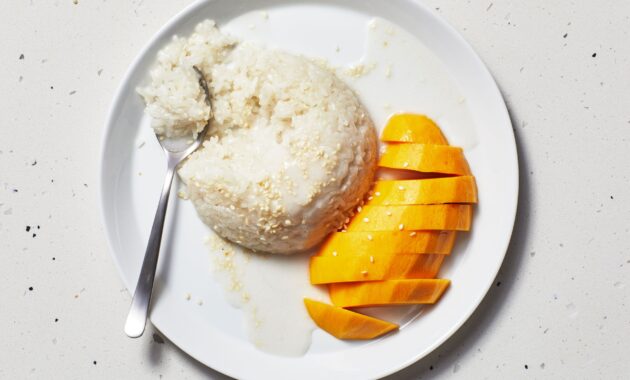
[Image Placeholder: A visually appealing photo of perfectly cooked sticky rice in a serving bowl, perhaps garnished with sesame seeds or alongside a complementary dish.]
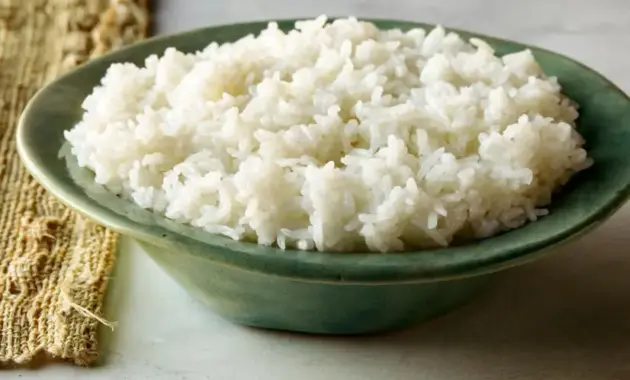
This sticky rice recipe focuses on traditional methods that yield the best flavor and texture. We’ll cover everything from selecting the right type of rice to achieving that signature stickiness that makes it so irresistible. Get ready to experience the joy of homemade sticky rice!
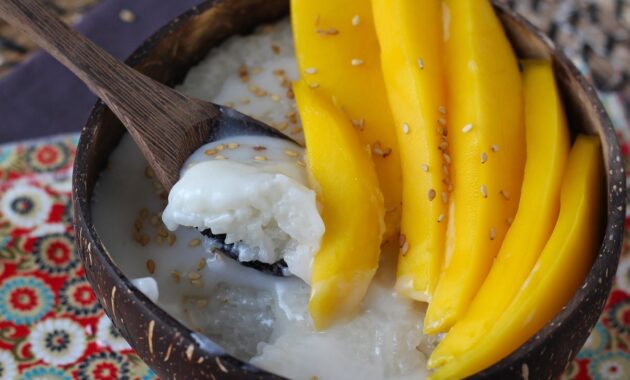
| Category | Value |
|---|---|
| Preparation Time | 15 minutes (plus soaking time) |
| Cooking Time | 25-30 minutes |
| Servings | 4-6 servings |
| Difficulty | Easy |
Nutrition per serving (approximately)
| Nutrient | Amount |
|---|---|
| Calories | 250-300 kcal |
| Carbohydrates | 55-65g |
| Protein | 5-7g |
| Fat | 1-2g |
Ingredients
| Ingredient | Quantity | Notes |
|---|---|---|
| Glutinous Rice (Sweet Rice) | 2 cups | Essential for the sticky texture. Do not substitute with regular rice. |
| Water | Enough for soaking and steaming | Filtered water recommended for best taste. |
Cooking Instructions
- Soak the Rice: This is the most crucial step! Place the glutinous rice in a large bowl and cover it with plenty of cool water. Let it soak for at least 4 hours, or preferably overnight. Soaking allows the rice to absorb water evenly, resulting in perfectly cooked and sticky grains. The longer the soak, the better the texture.
- Prepare the Steamer: While the rice is soaking, get your steamer ready. A bamboo steamer placed over a pot of boiling water is the traditional method and imparts a subtle, pleasant aroma to the rice. However, if you don’t have a bamboo steamer, a metal steamer basket will work just fine. Make sure the steamer basket is lined with cheesecloth or parchment paper to prevent the rice from falling through the holes.
- Drain the Rice: After the soaking period, thoroughly drain the rice in a fine-mesh sieve. Ensure that all excess water is removed. This step is important to prevent the rice from becoming waterlogged during steaming.
- Steam the Rice: Transfer the drained rice to the prepared steamer basket, spreading it out in an even layer. This allows for uniform cooking. Cover the steamer tightly and place it over a pot of rapidly boiling water.
- Steam for 25-30 Minutes: Steam the rice for 25 to 30 minutes, or until it is translucent and tender. Check the water level in the pot regularly and add more if needed to prevent it from boiling dry. After 20 minutes, use a fork to gently fluff the rice and redistribute it for even cooking.
- Check for Doneness: To check if the sticky rice is done, take a small amount and taste it. It should be soft, chewy, and slightly sticky. If it’s still hard or crunchy, continue steaming for another 5-10 minutes, checking periodically.
- Fluff and Serve: Once the sticky rice is cooked, remove it from the steamer and transfer it to a serving bowl. Use a fork or rice paddle to gently fluff the rice, separating the grains. This helps to prevent it from clumping together too much. Serve immediately and enjoy your homemade sticky rice!
Variations and Serving Suggestions:
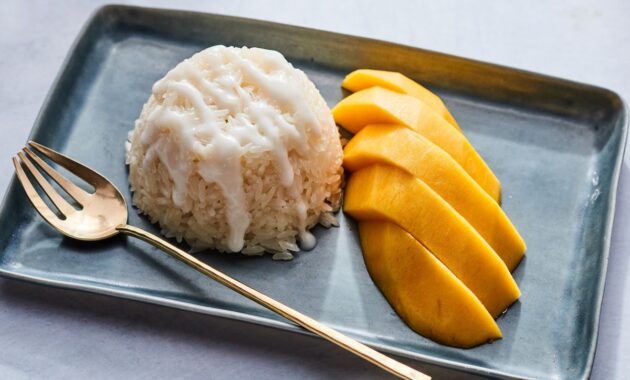
This sticky rice recipe is incredibly versatile and can be adapted to suit your preferences. Here are a few ideas:
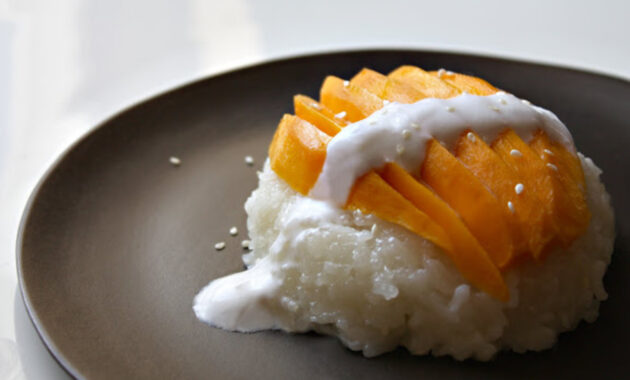
- Sweet Sticky Rice: For a sweet treat, add a tablespoon of sugar and a pinch of salt to the rice before steaming. You can also mix in coconut milk for extra richness and flavor.
- Savory Sticky Rice: Serve the sticky rice with grilled meats, stir-fries, or your favorite Asian sauces. It’s also a great accompaniment to curries and stews.
- Mango Sticky Rice (Khao Niao Mamuang): A classic Thai dessert! Serve the sticky rice with slices of ripe mango and a drizzle of sweetened coconut milk.
- Add Flavorings: Experiment with adding flavorings to the rice before steaming. Pandan leaves, ginger, or lemongrass can all add a unique and delicious twist.
- Use Different Liquid Instead of steaming with plain water, add coconut water for more flavorful experience.
Tips for Perfect Sticky Rice:
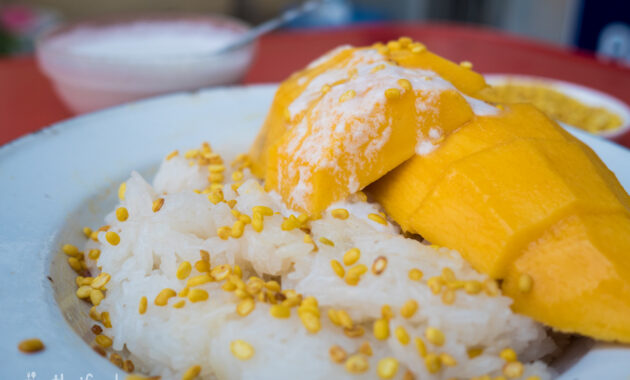
- Quality of Rice: Use high-quality glutinous rice for the best results. Look for rice that is pearly white and has a slightly sweet aroma.
- Soaking Time: Don’t skimp on the soaking time! Soaking the rice is essential for achieving the perfect texture.
- Steaming Technique: Ensure that the steamer is tightly covered to prevent steam from escaping. This will help the rice cook evenly.
- Don’t Overcook: Overcooked sticky rice can become mushy. Keep a close eye on it and check for doneness regularly.
- Storage: Leftover sticky rice can be stored in an airtight container in the refrigerator for up to 3 days. Reheat it in the microwave or steamer before serving.
- Cooking with a Rice Cooker: Although traditional steaming is recommended, you can cook sticky rice in a rice cooker if you don’t have a steamer. Follow the soaking instructions, and then use the water level recommended for white rice, but slightly reduce the amount of water used. Monitor the rice closely during cooking, and add a little more water if needed.
Understanding Sticky Rice Varieties
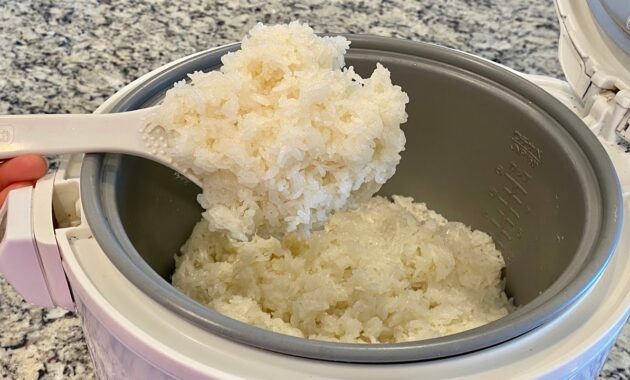
While the term “sticky rice” is commonly used, there are different types of glutinous rice available. These varieties may have slight variations in taste, texture, and cooking times.
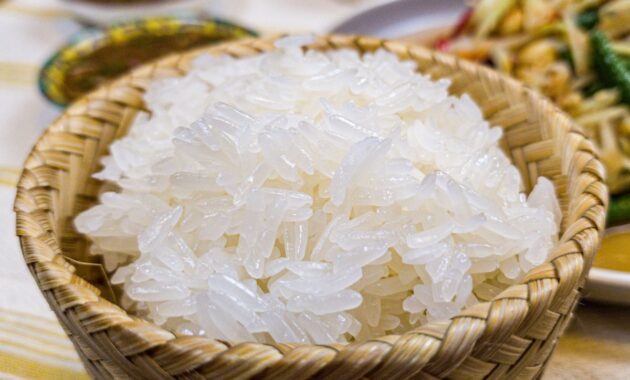
- Long-Grain Glutinous Rice: This type of sticky rice is characterized by its long, slender grains. It tends to be less sticky compared to short-grain varieties and is often used in savory dishes.
- Short-Grain Glutinous Rice: Short-grain glutinous rice has plump, round grains and a higher starch content, resulting in a chewier and stickier texture. It’s commonly used in both sweet and savory dishes, including desserts like mango sticky rice.
- Black Glutinous Rice: Also known as forbidden rice, black glutinous rice has a dark purple hue and a slightly nutty flavor. It’s often used in desserts and is rich in antioxidants.
When buying glutinous rice, check the packaging for labeling indicating that it is indeed “glutinous rice” or “sweet rice.” Avoid confusing it with regular white rice, as the cooking methods and resulting textures are vastly different.
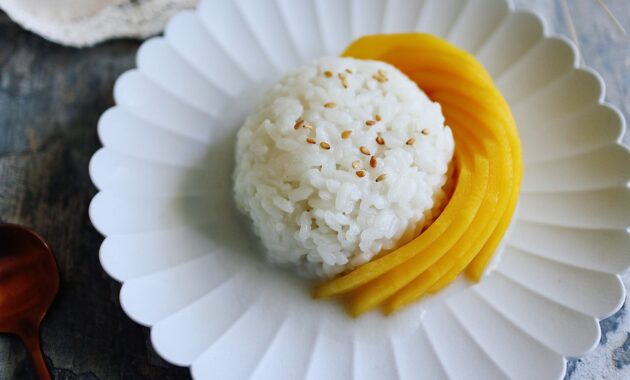
Mastering the art of making sticky rice opens up a world of culinary possibilities. Whether you’re craving a comforting bowl of sweet coconut rice or a savory accompaniment to your favorite Asian dishes, this versatile grain is sure to become a staple in your kitchen. Enjoy!
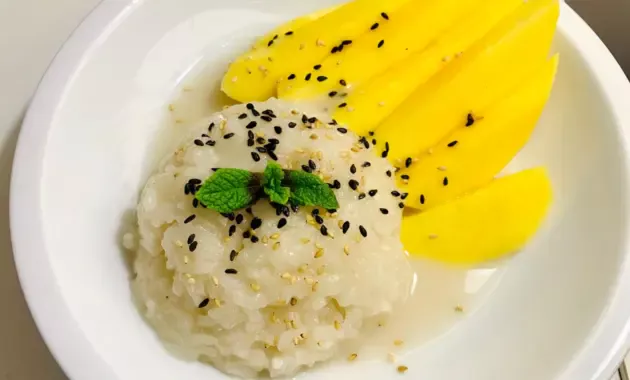
So, there you have it – a comprehensive guide to making perfect sticky rice at home. With a little practice, you’ll be able to create this delicious and versatile dish with ease. Enjoy!
